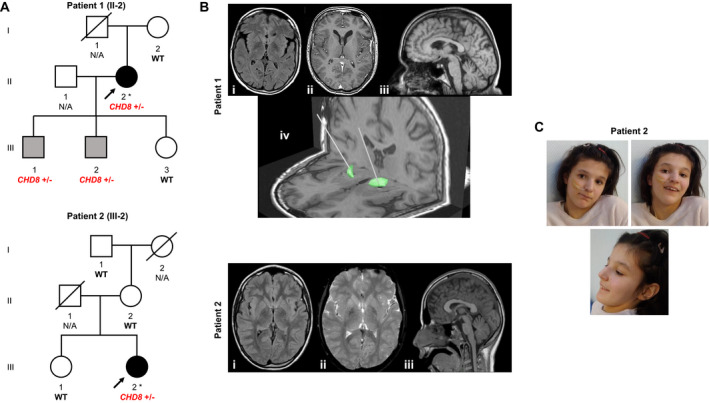Figure 1.

(A) Families with dystonia affected by CHD8 variants. Index patients 1 and 2 underwent whole‐exome sequencing, as indicated by asterisks. Open symbols are unaffected individuals, black symbols are individuals with generalized dystonia, and gray symbols are individuals with neurodevelopmental issues but no movement disorder. CHD8 variant status is depicted for all family members for whom DNA was available; WT, CHD8 homozygous wild‐type allele; N/A, no DNA available. (B) MRI data of patients 1 and 2; patient 1: axial FLAIR (i), axial T1 (ii), sagittal T1 (iii), DBS lead implantation into the globus pallidus internus (iv); patient 2: axial FLAIR (i), axial T2*WI (ii), sagittal T1 (iii). (C) Clinical photographs of patient 2 showing subtle facial stigmata including high forehead and supraorbital ridge.
